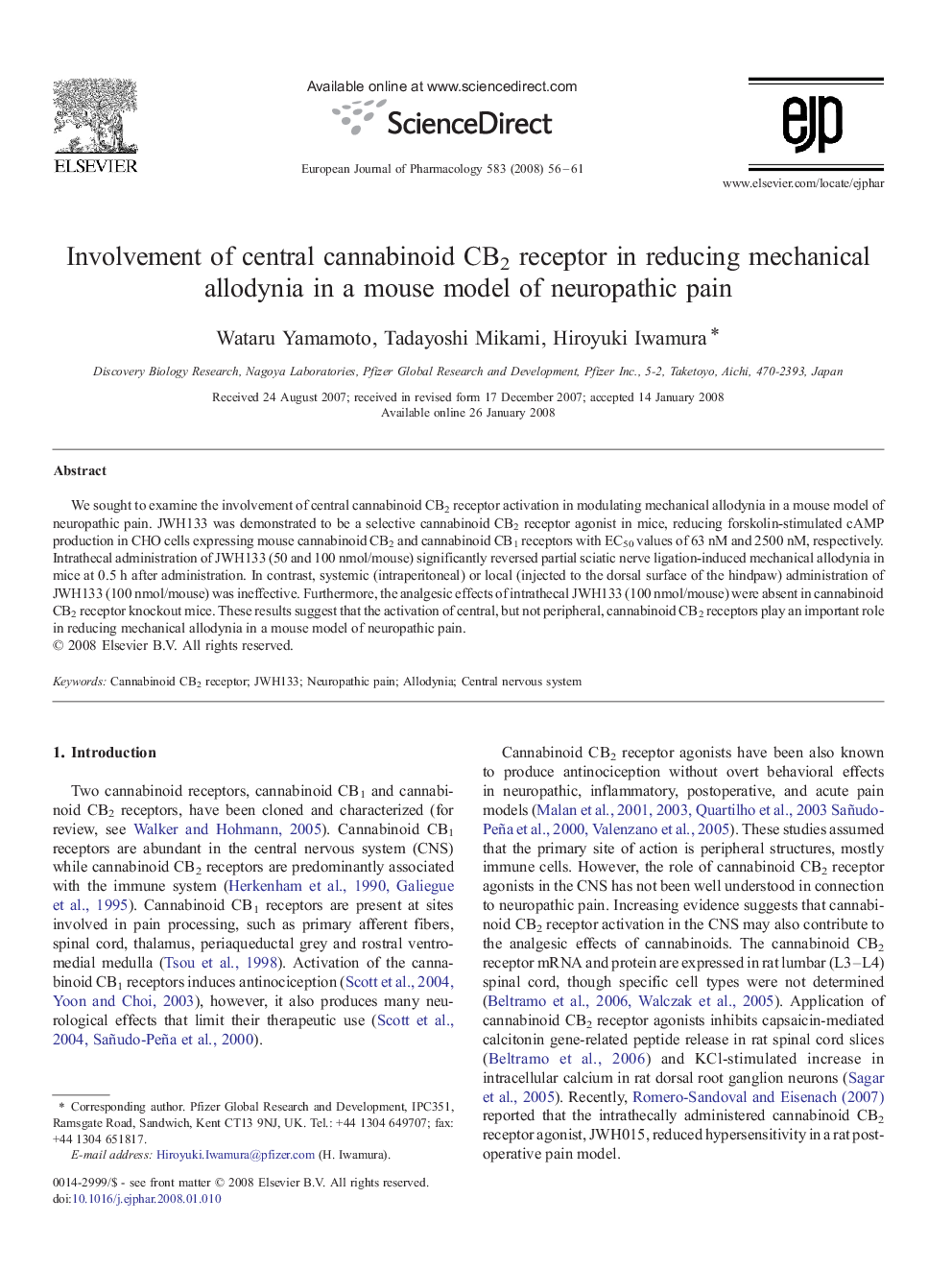| Article ID | Journal | Published Year | Pages | File Type |
|---|---|---|---|---|
| 2535294 | European Journal of Pharmacology | 2008 | 6 Pages |
We sought to examine the involvement of central cannabinoid CB2 receptor activation in modulating mechanical allodynia in a mouse model of neuropathic pain. JWH133 was demonstrated to be a selective cannabinoid CB2 receptor agonist in mice, reducing forskolin-stimulated cAMP production in CHO cells expressing mouse cannabinoid CB2 and cannabinoid CB1 receptors with EC50 values of 63 nM and 2500 nM, respectively. Intrathecal administration of JWH133 (50 and 100 nmol/mouse) significantly reversed partial sciatic nerve ligation-induced mechanical allodynia in mice at 0.5 h after administration. In contrast, systemic (intraperitoneal) or local (injected to the dorsal surface of the hindpaw) administration of JWH133 (100 nmol/mouse) was ineffective. Furthermore, the analgesic effects of intrathecal JWH133 (100 nmol/mouse) were absent in cannabinoid CB2 receptor knockout mice. These results suggest that the activation of central, but not peripheral, cannabinoid CB2 receptors play an important role in reducing mechanical allodynia in a mouse model of neuropathic pain.
